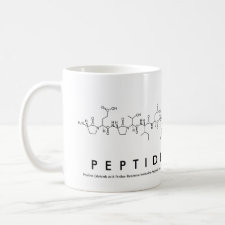
Authors: Li MX, Wang XH, Zhang LM, Wei XP
Article Title: A high sensitive epitope imprinted electrochemical sensor for bovine serum albumin based on enzyme amplifying.
Publication date: 2017
Journal: Analytical Biochemistry
Volume: 530
Page numbers: 68-74.
DOI: 10.1016/j.ab.2017.05.006
Alternative URL: http://www.sciencedirect.com/science/article/pii/S0003269717302038
Abstract: To improve the sensitivity of the molecular imprinting sensor detection of protein, a new strategy based on enzyme amplification was proposed. The determination of bovine serum albumin (BSA) was achieved by using the epitope imprinted techniques coupling with electrochemical measurement method. Nonapeptide, separated from BSA, was selected as a template molecule to prepare the molecularly imprinted polymer (MIP) film, and it could bind with the cavities of the MIP. By the use of epitope imprinted techniques, BSA can be recognized by the MIP via the nonapeptide on the surface of BSA. The synthesized horseradish peroxidase-labeled nonapeptide (HRP-nonapeptide) can also be recognized by the MIP. After the competitive reaction between HRP-nonapeptide and BSA, the enzymatic reaction derived from labeled HRP on the H2O2-hydroquinone system make the electrochemical current of hydroquinone change, then the concentration of BSA can be indirectly determined. BSA in the range of 1.0-150 ng/mL exhibited a linear relationship with the differential pulse voltammetric current variation and the detection limit was 0.02 ng/mL. The sensor has high sensitivity, good selectivity, and reproducibility. It has been applied to the determination of residual bovine serum albumin in human rabies vaccine with the recovery rate of 98.3%-102.5%
Template and target information: protein, epitope, bovine serum albumin, BSA
Author keywords: molecularly imprinting, Electrochemical sensor, Bovine serum albumin, Horseradish peroxidase, Epitope



Join the Society for Molecular Imprinting

New items RSS feed
Sign-up for e-mail updates:
Choose between receiving an occasional newsletter or more frequent e-mail alerts.
Click here to go to the sign-up page.
Is your name elemental or peptidic? Enter your name and find out by clicking either of the buttons below!
Other products you may like:
 MIPdatabase
MIPdatabase









